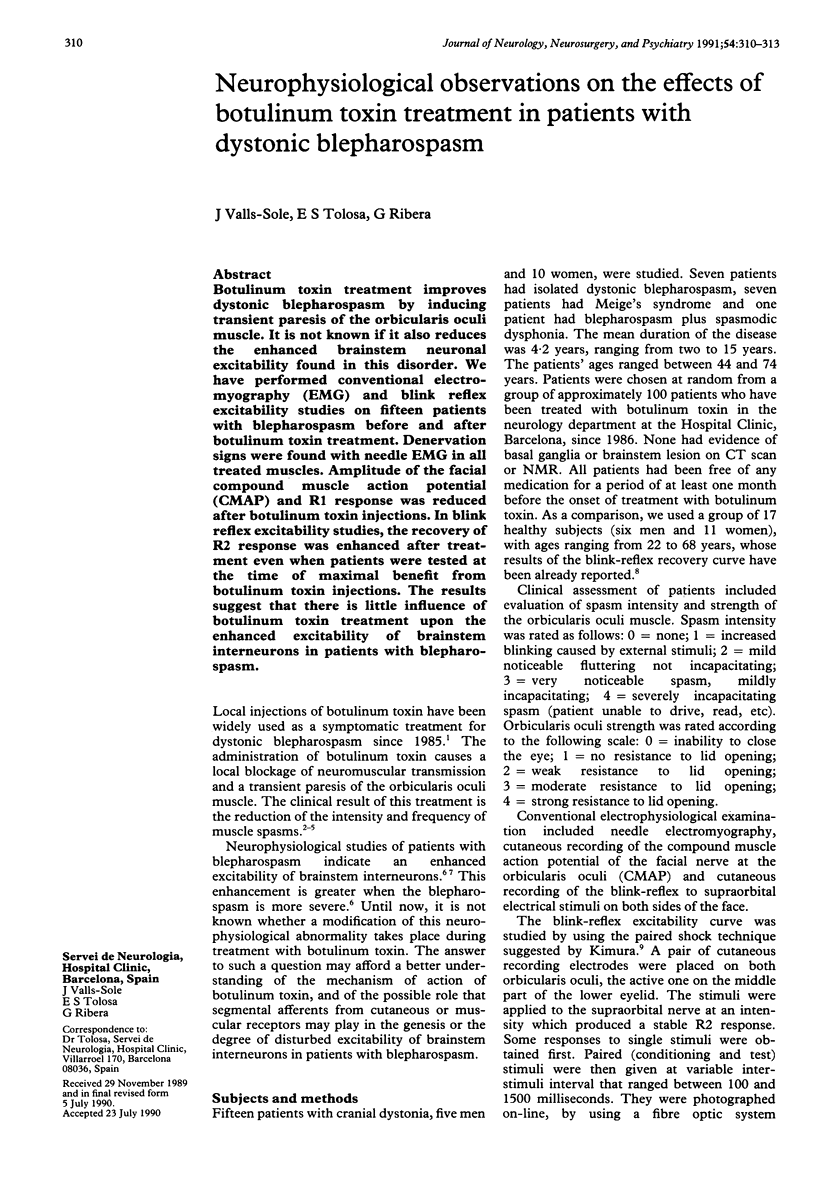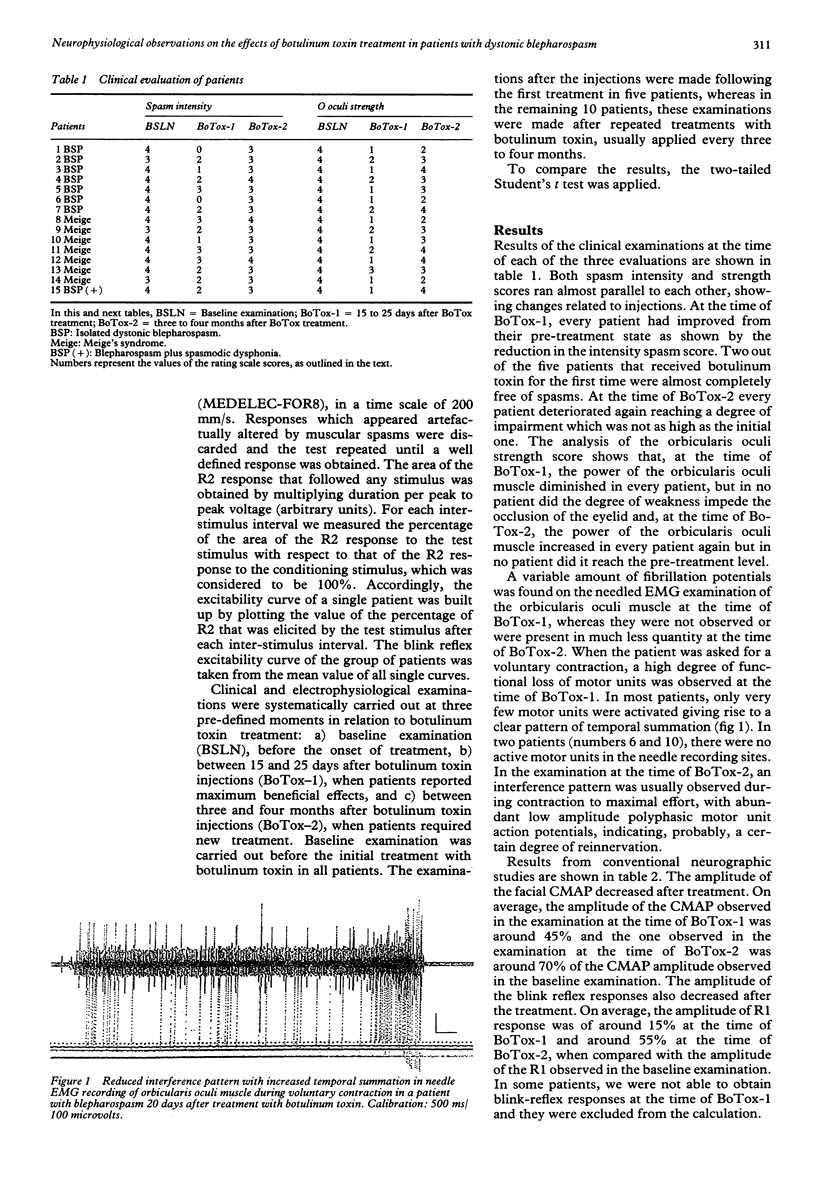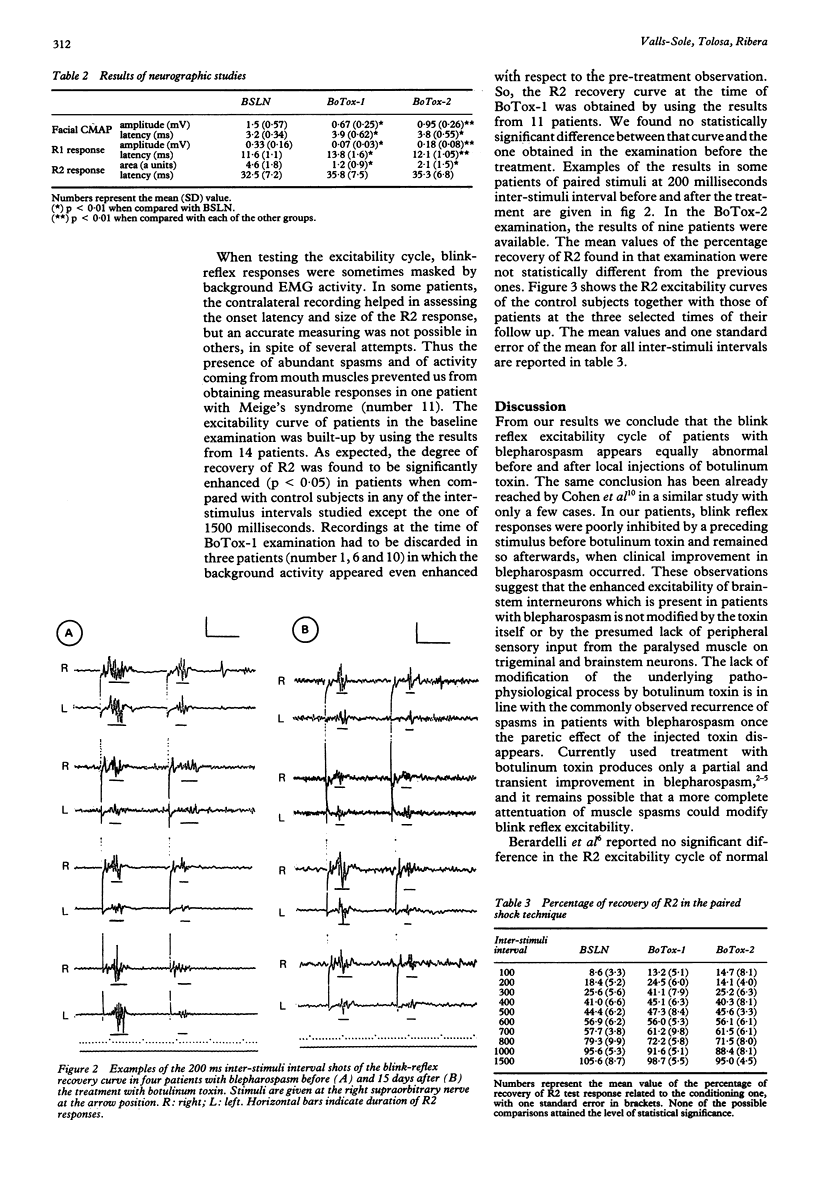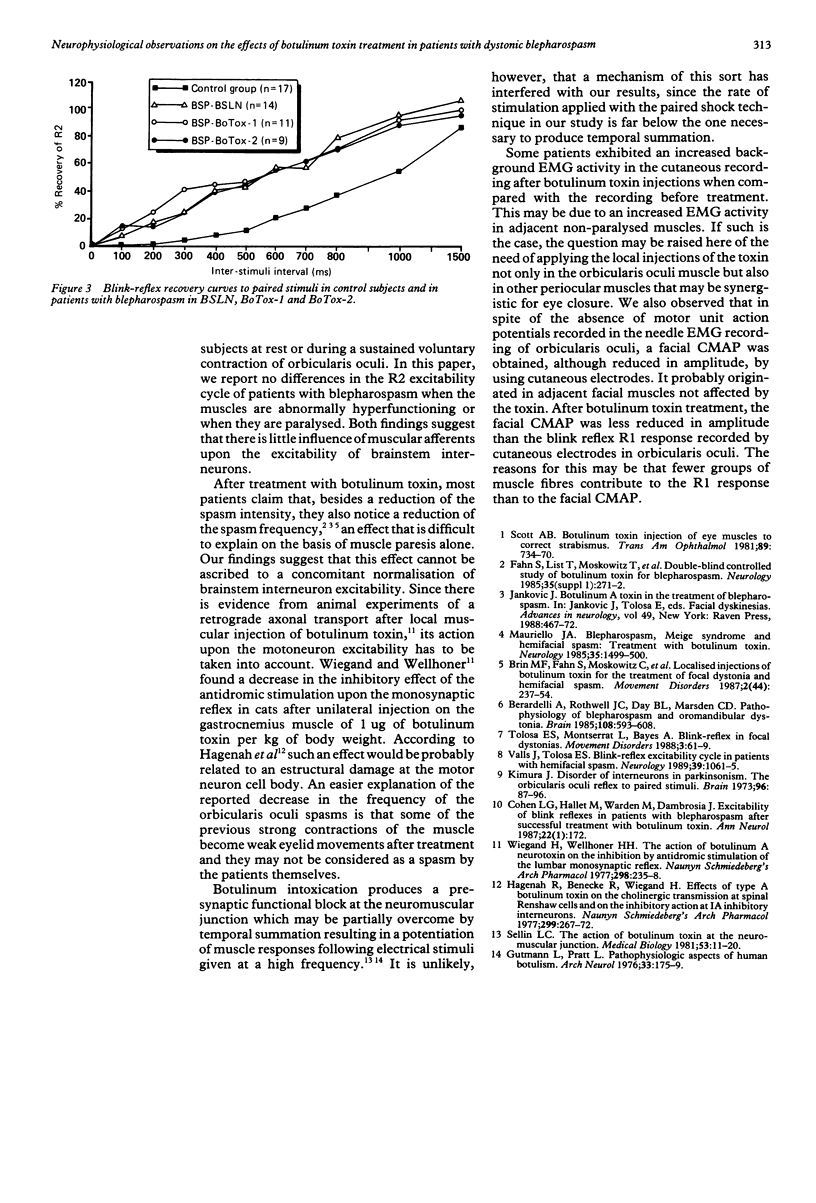Abstract
Botulinum toxin treatment improves dystonic blepharospasm by inducing transient paresis of the orbicularis oculi muscle. It is not known if it also reduces the enhanced brainstem neuronal excitability found in this disorder. We have performed conventional electromyography (EMG) and blink reflex excitability studies on fifteen patients with blepharospasm before and after botulinum toxin treatment. Denervation signs were found with needle EMG in all treated muscles. Amplitude of the facial compound muscle action potential (CMAP) and R1 response was reduced after botulinum toxin injections. In blink reflex excitability studies, the recovery of R2 response was enhanced after treatment even when patients were tested at the time of maximal benefit from botulinum toxin injections. The results suggest that there is little influence of botulinum toxin treatment upon the enhanced excitability of brainstem interneurons in patients with blepharospasm.
Full text
PDF



Selected References
These references are in PubMed. This may not be the complete list of references from this article.
- Berardelli A., Rothwell J. C., Day B. L., Marsden C. D. Pathophysiology of blepharospasm and oromandibular dystonia. Brain. 1985 Sep;108(Pt 3):593–608. doi: 10.1093/brain/108.3.593. [DOI] [PubMed] [Google Scholar]
- Brin M. F., Fahn S., Moskowitz C., Friedman A., Shale H. M., Greene P. E., Blitzer A., List T., Lange D., Lovelace R. E. Localized injections of botulinum toxin for the treatment of focal dystonia and hemifacial spasm. Mov Disord. 1987;2(4):237–254. doi: 10.1002/mds.870020402. [DOI] [PubMed] [Google Scholar]
- Gutmann L., Pratt L. Pathophysiologic aspects of human botulism. Arch Neurol. 1976 Mar;33(3):175–179. doi: 10.1001/archneur.1976.00500030031006. [DOI] [PubMed] [Google Scholar]
- Hagenah R., Benecke R., Wiegand H. Effects of type A botulinum toxin on the cholinergic transmission at spinal Renshaw cells and on the inhibitory action at Ia inhibitory interneurones. Naunyn Schmiedebergs Arch Pharmacol. 1977 Oct;299(3):267–272. doi: 10.1007/BF00500319. [DOI] [PubMed] [Google Scholar]
- Kimura J. Disorder of interneurons in Parkinsonism. The orbicularis oculi reflex to paired stimuli. Brain. 1973;96(1):87–96. doi: 10.1093/brain/96.1.87. [DOI] [PubMed] [Google Scholar]
- Mauriello J. A., Jr Blepharospasm, Meige syndrome, and hemifacial spasm: treatment with botulinum toxin. Neurology. 1985 Oct;35(10):1499–1500. doi: 10.1212/wnl.35.10.1499. [DOI] [PubMed] [Google Scholar]
- Scott A. B. Botulinum toxin injection of eye muscles to correct strabismus. Trans Am Ophthalmol Soc. 1981;79:734–770. [PMC free article] [PubMed] [Google Scholar]
- Sellin L. C. The action of batulinum toxin at the neuromuscular junction. Med Biol. 1981 Feb;59(1):11–20. [PubMed] [Google Scholar]
- Tolosa E., Montserrat L., Bayes A. Blink reflex studies in focal dystonias: enhanced excitability of brainstem interneurons in cranial dystonia and spasmodic torticollis. Mov Disord. 1988;3(1):61–69. doi: 10.1002/mds.870030108. [DOI] [PubMed] [Google Scholar]
- Valls-Sole J., Tolosa E. S. Blink reflex excitability cycle in hemifacial spasm. Neurology. 1989 Aug;39(8):1061–1066. doi: 10.1212/wnl.39.8.1061. [DOI] [PubMed] [Google Scholar]
- Wiegand H., Wellhöner H. H. The action of botulinum A neurotoxin on the inhibition by antidromic stimulation of the lumbar monosynaptic reflex. Naunyn Schmiedebergs Arch Pharmacol. 1977 Jul;298(3):235–238. doi: 10.1007/BF00500893. [DOI] [PubMed] [Google Scholar]


